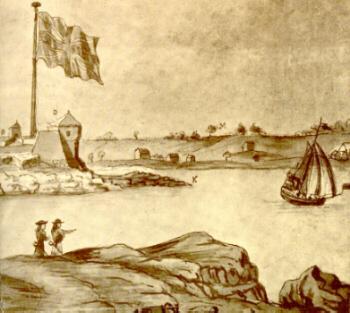New Hampshire Colony

Fort Williams
Settlement in New Hampshire began in 1622, when John Mason and Sir Ferdinando Gorges were given the territory between the Merrimac and Sagadahoc Rivers. David Thomson, Edward Hilton and Thomas Hilton were some of the early leaders of the settlement. The early settlement was established along the coast of New Hampshire. However, the settlement slowly expanded along the rivers of New Hampshire.
In 1829, Mason and Gorges divided their claim along the Piscataquis River. Some of New Hampshire settlers were originally residents of Massachusetts who were unhappy with the strict Puritan rule. There was no central rule in New Hampshire. The settlers felt vulnerable. Thus, in 1641 they agreed to be ruled by the Massachusetts colony– as long as they retained local autonomy and were not required to become members of the Congregational (Puritan) Church. New Hampshire stayed part of the Massachusetts Bay colony until 1679, when King Charles II issued a charter establishing New Hampshire as a province. This was an attempt to satisfy the heirs of John Mason who were trying to reclaim their territory. Questions regarding the Mason family land claims divided the colony. Finally, in 1686, New Hampshire was recombined with Massachusetts, once again, under the Dominion of New England.
When the Glorious Revolution broke out, Edmund Andros, the unpopular governor was sent back to Boston. New Hampshire was once again without effective government. The new governor of Massachusetts was asked to oversee New Hampshire– which he did– until a new charter was issued in 1691. From 1691 until 1741 New Hampshire and Massachusetts shared a governor, even though they had separate assemblies. This was often problematic, since there were ongoing territorial disputes between the two colonies. In 1741, King George II decreed that the two colonies should have separate governors. He also stipulated what the borders of each settlement should be.
New Hampshire residents were fisherman, farmers, and shipbuilders. The colony was primarily Puritan, but was more welcoming to other religious groups than neighboring Massachusetts.
.
 >
>